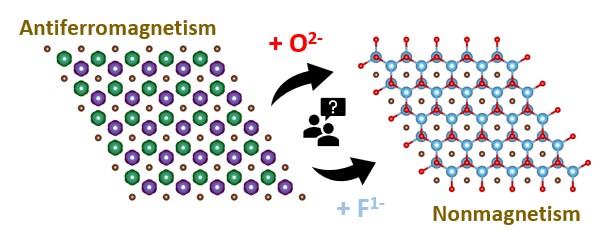Barbora Vénosová a František Karlický opublikovali nový článek!
MXene’s Surface Functionalization Patterns and Their Impacts on Magnetism
Odkaz zde: https://doi.org/10.1039/D4CP01319K
Abstrakt:
Two-dimensional transition metal carbides and nitrides (MXenes) are a perspective group of materials with a broad palette of applications. Surface terminations are a product of the MXene preparation, and post-processing can also lead to partial coverage. Despite applicability and fundamental properties being driven by termination patterns, it is not fully clear, how they behave on MXene surfaces with various degrees of surface coverage. Here, as the first step, we used density functional theory to predict possible patterns in prototypic Ti2C MXene, demonstrating the different behavior of the two most frequent terminal atoms, oxygen and fluorine. Oxygen (with formal charge -2e) prefers a zigzag line both-side adsorption pattern on bare Ti2C, attracting the next adsorbent to a minimal distance. Oxygen defects in fully O-terminated MXene tend to form similar zigzag line vacancy patterns. On the other hand, fluorine (with a formal charge of -1e) prefers one-side flake (island) adsorption on bare Ti2C and a similar desorption style from fully fluorinated Ti2C. MXene magnetic behavior is subsequently driven by the patterns, either compensating locally and holding the global magnetic state of the MXene until some limit (oxygen case) or gradually increasing total magnetism by summing of local effects (fluorine case). The systematic combinatoric study of Ti2CTx with various coverages (0 ≤ x ≤ 2) of distinct terminal atoms T = O or F brings encouraging possibilities of tunable behavior of MXenes and provides useful guidance for its modeling towards electronic nanodevices.

